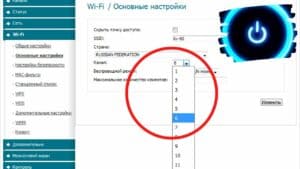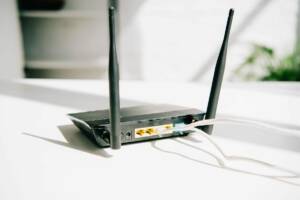Choosing a wireless internet technology for your apartment may seem complicated, but with the right knowledge, you can choose the right option. You need to consider factors such as coverage, speed, cost, and reliability. For example, if you need the internet for work, you will probably want to choose an option with high speed and reliability. If you want to save money, then choose a low cost option, but be aware of speed and coverage limitations. It is also important to consider the location of your apartment and whether there are any obstructions to the signal. Some technologies, such as Wi-Fi, may be limited at long range or through walls. Explore all the available options and choose the right wireless internet technology for you to enjoy a fast and reliable connection in your apartment. Wireless internet is a convenient way to get high-speed access to the network in your apartment without having to wire it. The main advantage of such a connection is that there is no need to lay wires. This is convenient and saves space in the apartment. In addition, wireless internet allows you to connect to the network from any device that supports Wi-Fi. But there are also disadvantages - frequent failures, security issues and the inability to get a stable speed with a large number of users on the network. Before choosing wireless Internet, you need to carefully study all its pros and cons.
How to properly set up a wireless network in an apartment
Wireless Internet is becoming an increasingly popular connection option in the apartment. However, to get maximum speed and stability, you need to configure your wireless network correctly.
First, choose the right location to place your router. It must be installed in the center of the apartment and be at a height of at least one meter from the floor.
Secondly, set a secure password for your Wi-Fi network to avoid unauthorized access to your network.
Third, set a unique name for your wireless network to avoid conflicts with other networks and make your network easier to find.
Finally, check your router settings and make sure they suit your needs. You can configure the Wi-Fi channel, set speed and traffic limits, and configure MAC address filtering.
By following these tips, you can set up a wireless network in your apartment so that you get maximum speed and signal stability.
The quality of the Wi-Fi signal in an apartment can be significantly improved with a number of simple steps.
Firstly, it is recommended to place the router in a place where it will be most effective, that is, in the center of the apartment, at eye level. If the router is on a different floor, the signal will not be nearly as strong.
Secondly, you should pay attention to the Wi-Fi channel. If neighbors use the same channel, the signal will be much weaker. Therefore, to avoid this problem, you need to change the channel on the router.
Thirdly, walls and partitions can interfere with the signal. The fewer obstacles, the better the signal.
Fourthly, you can use repeaters to strengthen the signal. They are a simple and affordable way to improve the quality of your Wi-Fi signal.
Following these simple rules will help improve the quality of the Wi-Fi signal in your apartment and provide faster and more stable Internet.
Wireless internet is convenient, but it is not always safe. Hackers and intruders can hack into your wireless network and gain access to your personal data, passwords, and financial information. But there are several ways to protect your network and prevent such incidents.
1. Change the default password to a more complex one. The default password that comes with your router can be easily hacked. Use a unique password consisting of letters, numbers and special characters.
2. Enable network encryption. Encryption protects your network from unauthorized access. Select WPA2, which is considered the most secure.
3. Hide your network name. Change your network name so it doesn't appear in the public list. This will make your network less accessible to attackers.
4. Limit access to your network. You can configure your network so that only authorized devices have access to it. This can be done through MAC address filtering.
5. Update your software. Update your router software regularly to ensure it is protected from new vulnerabilities.
By following these simple tips, you can greatly improve the security of your wireless network and protect your personal information. In order to get the best wireless Internet performance in your apartment, you need to choose the optimal location to place your router. It's important to consider several factors when choosing a location, from the location of the cable outlet to the size of the room and the presence of other electronic devices.
The first step is to select the location where the cable outlet is located. This could be in the living room, bedroom or even the kitchen. It is important that the router is connected by cable to a cable outlet, and not connected via Wi-Fi. This will help avoid loss of Internet speed and improve signal quality.
The second factor is the area of the room. If the apartment has a large area, then you need to choose a place that will be close to the center of the apartment. This will help increase Wi-Fi coverage and improve signal quality in all rooms.
The third factor is the presence of other electronic devices. The router should not be placed near other electronic devices such as a microwave oven, TV, or cell phone. This may lead to signal loss and poor internet quality.
Ultimately, to get the best wireless Internet performance in your apartment, you need to choose the optimal location for your router, taking into account the location of the cable outlet, the area of the room, and the presence of other electronic devices. To organize a wireless network in an apartment, you need to have several devices. First of all, this is a Wi-Fi router that will provide access to the Internet. It is important to choose a router with the appropriate data transfer speed and signal coverage.
Wi-Fi repeaters or amplifiers can also be used to expand the coverage area of the Wi-Fi signal. They allow you to strengthen the signal and expand its coverage area in places where the signal was weak.
To connect devices to a wireless network, you must have a Wi-Fi adapter. This can be a built-in adapter in a smartphone or laptop, or a separate USB adapter.
If there are devices in the apartment that do not support wireless connections, then you can use a router with Ethernet ports and connect the devices via a wired network.
It is important to configure your wireless network correctly so that it is protected from unauthorized access. To do this, you can use a password for the Wi-Fi network and configure MAC address filtering.
By following these recommendations, you can organize a wireless network in your apartment and enjoy high-speed Internet access.
How to save on a wireless network in an apartment
Wireless Internet has become an integral part of the lives of most people. However, if you use a wireless network at home, you may face high costs to connect and use it. In this article we will look at several ways to reduce the cost of a wireless network in your apartment.
1. Choose the right data plan from your internet service provider. Some providers offer limited data plans that can significantly reduce your monthly bill.
2. Use a router with a speed limiting feature. This will allow you to control the speed of your Internet connection and avoid overpayments.
3. Avoid using the wireless network to stream videos or download large files. If possible, use a wired connection.
4. Turn off your router when you are not using the Internet. This will save energy and reduce energy costs.
5. Check the speed of your Internet connection and compare it with what you pay. If the speed is slower than advertised, contact your ISP for assistance.
By following these tips, you can significantly reduce the cost of a wireless network in your apartment and save money.
Read further:






